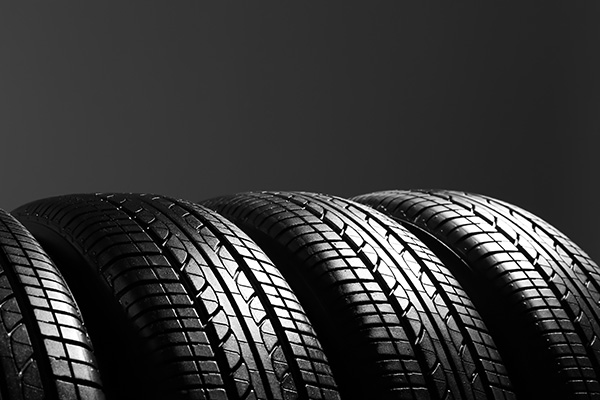
If you drive an all-wheel-drive (AWD) vehicle, you know it’s designed for superior control and traction in all kinds of weather. But did you know that maintaining matching tires is important for the performance and longevity of your AWD system? Mismatched tires can lead to more than just uneven handling; they can actually cause damage to your AWD system, resulting in expensive repairs down the line. Let’s explore why matching tires matter so much for AWD vehicles and how they play a key role in ensuring optimal performance.
The Unique Demands of All-Wheel Drive Vehicles
Unlike two-wheel-drive systems, AWD systems are engineered to distribute power to all four wheels, where power is sent only to the front or rear. This even distribution of power gives AWD vehicles an edge in terms of stability, especially in adverse conditions like rain, snow, or off-road terrains. However, AWD vehicles require each tire to rotate at the same speed so that the drivetrain components don’t face unnecessary strain. If the tires don’t match in size, tread wear, or type, the rotation rate of each tire differs, causing the AWD system to work harder to compensate.
This constant adjustment can cause undue wear on parts like the transfer case, differential, and even the transmission. Since AWD systems are typically more complex and expensive to repair than their two-wheel-drive counterparts, keeping tires matched is one of the simplest and most effective ways to maintain your vehicle’s health.
How Tire Size and Tread Affect AWD Performance
One of the most important reasons to keep all four tires matched on an AWD vehicle is to avoid differences in tire size and tread depth. Here’s how these factors impact your vehicle’s AWD system:
Tire Size
Even slight variations in tire size can make a difference. A new tire has a different diameter than a worn-out one, which can cause rotation speed discrepancies. For AWD systems, this mismatch in rotational speed can confuse the differential, forcing it to adjust for what it perceives as traction loss. Over time, these constant adjustments can lead to differential and drivetrain damage.
Tread Depth
Mismatched tread depths can also pose an issue. When one tire is more worn than the others, it becomes slightly smaller, affecting its rotational speed. AWD systems are designed to work best when all tires have similar tread levels, ensuring balanced traction. Significant tread differences can lead to excessive wear on AWD components.
Matching Tires for Safety and Stability
Beyond preserving your AWD system, matching tires is essential for safety. When tires are uniform in size and tread, they grip the road evenly, providing balanced handling and braking. This balance is especially vital when road conditions are less than ideal. Imagine navigating through rain or snow with mismatched tires; one wheel might lose grip sooner than the others, throwing the vehicle’s stability off-balance. For AWD vehicles that are meant to provide added security in these conditions, mismatched tires can undermine the system’s ability to keep you safe.
Does Rotation Matter as Much with AWD
Regular tire rotation is essential for any vehicle, but it’s especially critical for AWD vehicles where all tires must work together. AWD vehicles typically require front-to-back rotation rather than side-to-side rotation. This approach helps even out wear across all four tires, maintaining uniform tread depth and ensuring that no single tire wears down faster than the others. Keeping a consistent rotation schedule extends the life of your tires and reduces the need to replace them at different times, which might otherwise create mismatches in tire wear.
Replacing a Single Tire vs. a Full Set on AWD Vehicles
Sometimes, you may face a situation where only one tire needs replacement. With AWD vehicles, this decision is more complex than it is for two-wheel-drive cars. Replacing just one tire means that the new tire will have a larger diameter and more tread than the other three, creating an imbalance. This can place a strain on the AWD system as it tries to keep up with the speed difference.
If one of your AWD vehicle’s tires is damaged beyond repair, replacing the full set may be the best option to maintain balance. Some tire shops can “shave” the tread of a new tire to match the depth of your existing tires, but this is a short-term solution. It’s best to replace all four tires simultaneously for optimal AWD performance and to avoid potential issues.
Simple Maintenance for Long-Term Performance
To maximize the life of your AWD system and tires, consider these maintenance tips:
Check Tire Pressure Regularly
Underinflated or overinflated tires wear out unevenly, which can exacerbate any mismatched tread depth issues. Proper tire inflation keeps your tires aligned and balanced.
Inspect Tread Depth
Make it a habit to inspect tread depth every few months, especially if you frequently drive in challenging conditions. Aim to replace tires when the tread wears down to 4/32 of an inch.
Schedule AWD Inspections
Regular AWD system inspections by a qualified technician can catch issues early, saving you from costly repairs and helping you stay safe on the road.
For expert tire replacement and AWD maintenance, book your service with Romay's Auto Service. Let us help you keep your vehicle balanced and road-ready!